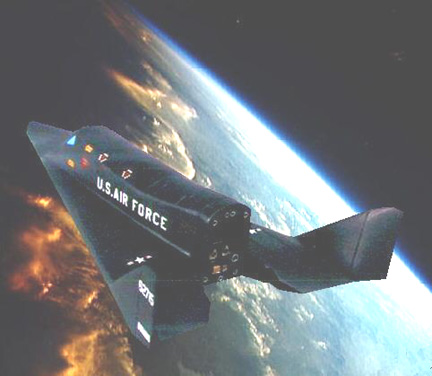

 |
 |
|
Dyna-Soar 
Dyna-Soar Credits - © Mark Wade The Dyna-Soar (short
for DYNAmic SOARing) orbital “spaceplane” (originally designed as the X-20) was
conceived by the U.S. Air Force in 1957 as the next step after the X-15
experimental aircraft. Planned to investigate high-altitude flight at hypersonic
speeds, it was to be a piloted, delta-wing glider launched into space by a
rocket. The design was based on the World War II-era “Silver Bird” idea of
German Eugen Sänger, which was of a bomber that could “skip” and glide around
the Earth in the upper atmosphere. It was the first American spacecraft to have
reached the mockup stage, and was only eight months away from its first “drop
tests” from a B-52, when it was canceled in 1963 in favor of the Manned
Orbiting Laboratory. The air force had
planned several versions of the spacecraft. During its development by Boeing,
the design gained weight and its launch vehicle was changed from a Titan I to a
Titan II and eventually the Titan III, which could carry a heavier load into
orbit. The craft would have been covered with a ceramic heat-resistant
material, similar to the material that was used later on the Space Shuttle. |